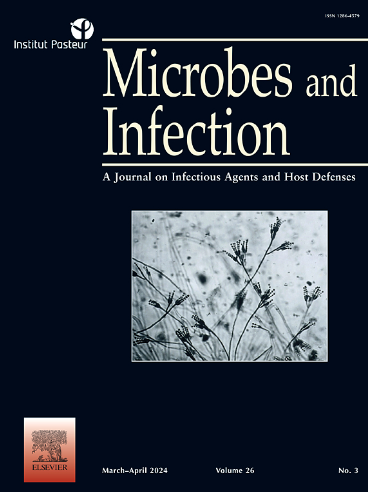Unraveling the role of human microglia in tick-borne encephalitis virus infection: insights into neuroinflammation and viral pathogenesis
IF 2.6
4区 医学
Q3 IMMUNOLOGY
引用次数: 0
Abstract
Tick-borne encephalitis virus (TBEV) is a neurotropic orthoflavivirus responsible for severe infections of the central nervous system. Although neurons are predominantly targeted, specific involvement of microglia in pathogenesis of TBE is not yet fully understood. In this study, the susceptibility of human microglia to TBEV is investigated, focusing on productive infection and different immune responses of different viral strains. We investigated primary human microglia and two immortalized microglial cell lines exposed to three TBEV strains (Hypr, Neudörfl and 280), each differing in virulence. Our results show that all microglia cultures tested support long-term productive infections, regardless of the viral strain. In particular, immune response varied significantly with the viral strain, as shown by the differential secretion of cytokines and chemokines such as IP-10, MCP-1, IL-8 and IL-6, quantified using a Luminex 48-plex assay. The most virulent strain triggered the highest cytokine induction. Electron tomography revealed substantial ultrastructural changes in the infected microglia, despite the absence of cytopathic effects. These findings underscore the susceptibility of human microglia to TBEV and reveal strain-dependent variations in viral replication and immune responses, highlighting the complex role of microglia in TBEV-induced neuropathology and contribute to a deeper understanding of TBE pathogenesis and neuroinflammation.
揭示人类小胶质细胞在蜱传脑炎病毒感染中的作用:洞察神经炎症和病毒发病机理。
蜱传脑炎病毒(TBEV)是一种具有神经侵袭性的正黄病毒,可导致中枢神经系统的严重感染。虽然蜱传脑炎病毒主要针对神经元,但小胶质细胞在蜱传脑炎发病机制中的具体参与尚未完全明了。本研究调查了人类小胶质细胞对 TBEV 的易感性,重点是不同病毒株的生产性感染和不同的免疫反应。我们研究了暴露于三种 TBEV 株系(Hypr、Neudörfl 和 280)的原代人类小胶质细胞和两种永生化小胶质细胞系,每种株系的毒性都不同。我们的研究结果表明,无论病毒毒株如何,所有测试过的小胶质细胞培养物都能支持长期的生产性感染。特别是,免疫反应随病毒株的不同而有显著差异,这体现在细胞因子和趋化因子(如 IP-10、MCP-1、IL-8 和 IL-6)的不同分泌量上。毒力最强的菌株引发的细胞因子诱导最高。电子断层扫描显示,尽管没有细胞病理效应,但受感染的小胶质细胞的超微结构发生了重大变化。这些发现强调了人类小胶质细胞对TBEV的易感性,并揭示了病毒复制和免疫反应的毒株依赖性变化,突出了小胶质细胞在TBEV诱导的神经病理学中的复杂作用,有助于加深对TBE发病机制和神经炎症的理解。
本文章由计算机程序翻译,如有差异,请以英文原文为准。
求助全文
约1分钟内获得全文
求助全文
来源期刊

Microbes and Infection
医学-病毒学
CiteScore
12.60
自引率
1.70%
发文量
90
审稿时长
40 days
期刊介绍:
Microbes and Infection publishes 10 peer-reviewed issues per year in all fields of infection and immunity, covering the different levels of host-microbe interactions, and in particular:
the molecular biology and cell biology of the crosstalk between hosts (human and model organisms) and microbes (viruses, bacteria, parasites and fungi), including molecular virulence and evasion mechanisms.
the immune response to infection, including pathogenesis and host susceptibility.
emerging human infectious diseases.
systems immunology.
molecular epidemiology/genetics of host pathogen interactions.
microbiota and host "interactions".
vaccine development, including novel strategies and adjuvants.
Clinical studies, accounts of clinical trials and biomarker studies in infectious diseases are within the scope of the journal.
Microbes and Infection publishes articles on human pathogens or pathogens of model systems. However, articles on other microbes can be published if they contribute to our understanding of basic mechanisms of host-pathogen interactions. Purely descriptive and preliminary studies are discouraged.
 求助内容:
求助内容: 应助结果提醒方式:
应助结果提醒方式:


